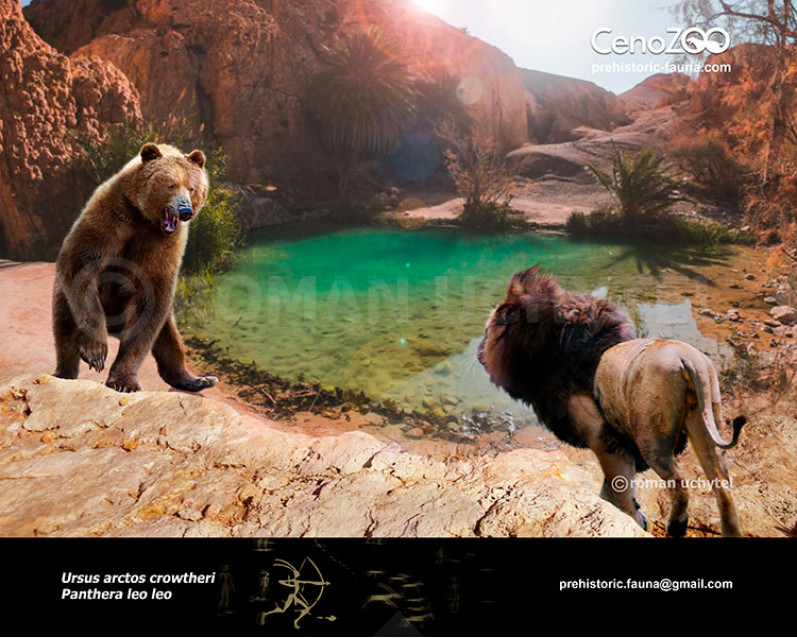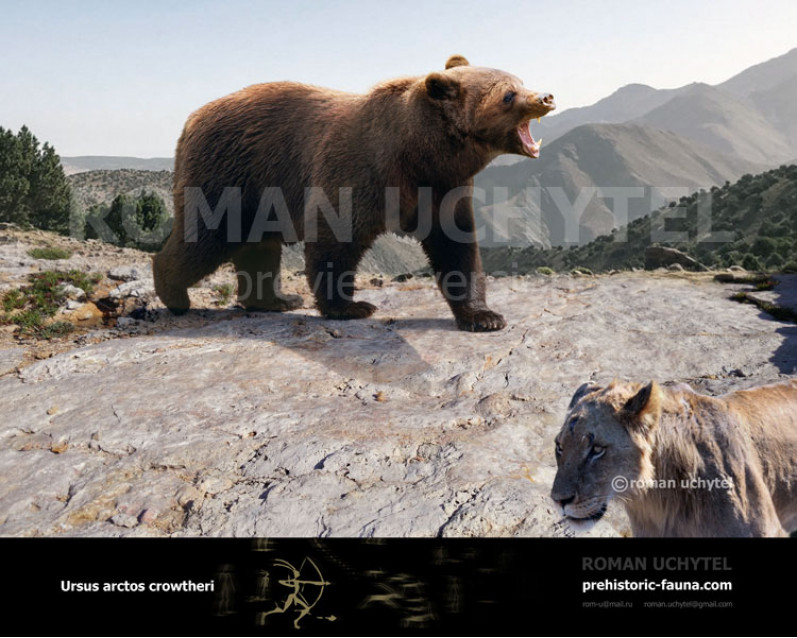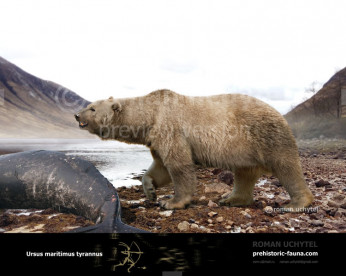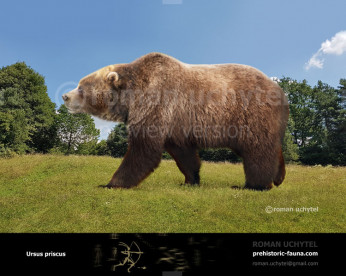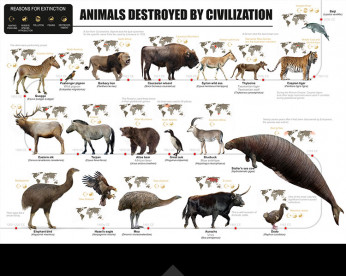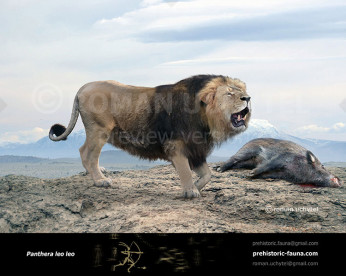Atlas Bear
439439
The names Atlas bear and African bear have been applied to an extinct population or populations of the brown bear in North Africa.
The Atlas bear was Africa's only native bear that survived into modern times. Once inhabiting the Atlas Mountains and neighbouring areas, from Morocco to Libya, the animal is now thought to be extinct. The Atlas bear was brownish black in colour and lacked a white mark on the muzzle. The fur on the underparts was reddish orange. The fur was 100–130 mm long. The muzzle and claws were shorter than those of the American black bear, though it was stouter and thicker in body. The Atlas bear was said to have been 2,7 m long and weighed up to 450 kg. It apparently fed on roots, acorns and nuts.The Atlas bear was said to have been mostly herbivorous, but since most bears today are omnivores, the Atlas bear is believed to have been able to eat meat as well. Where the Atlas bear actually originated from is unknown; one genetic study was unable to link it to any brown bear, but it had weak but significant mtDNA links to the polar bear. The Atlas bear's ecology is presumed to be similar to that of the other brown bears. Sympatric predators included the Barbary leopard and lion.
The decline of the Atlas bear can be partly attributed to the Roman Empire; as the empire expanded into Northern Africa, the Romans intensely hunted and captured the Atlas bear and many other animals and used them as sport for many of their games. This went on for centuries, during which time thousands of bears were used in the arenas to fight against gladiators, lions, tigers and other animals. They were cruelly treated, often starved and malnourished to increase their desperation, and hence their aggression, within the arena. Thousands of these bears were also hunted for sport, venatio games, or execution of criminals ad bestias. The Atlas bear became extinct shortly after modern firearms were developed. Over-hunting may have contributed to their decline. Pressure from zoo collectors sealed their fate, with the animals being taken away from one another and unable to reproduce and flourish. The Atlas bear finally became extinct in the late 19th century; the last one recorded to be killed by hunters was in 1870 in the Tetouan Mountains in northern Morocco. Human activity can definitely be said to have played a large role in pushing the extinction of the Atlas bear.
The names Atlas bear and African bear have been applied to an extinct population or populations of the brown bear in North Africa.
The Atlas bear was Africa's only native bear that survived into modern times. Once inhabiting the Atlas Mountains and neighbouring areas, from Morocco to Libya, the animal is now thought to be extinct. The Atlas bear was brownish black in colour and lacked a white mark on the muzzle. The fur on the underparts was reddish orange. The fur was 100–130 mm long. The muzzle and claws were shorter than those of the American black bear, though it was stouter and thicker in body. The Atlas bear was said to have been 2,7 m long and weighed up to 450 kg. It apparently fed on roots, acorns and nuts.The Atlas bear was said to have been mostly herbivorous, but since most bears today are omnivores, the Atlas bear is believed to have been able to eat meat as well. Where the Atlas bear actually originated from is unknown; one genetic study was unable to link it to any brown bear, but it had weak but significant mtDNA links to the polar bear. The Atlas bear's ecology is presumed to be similar to that of the other brown bears. Sympatric predators included the Barbary leopard and lion.
The decline of the Atlas bear can be partly attributed to the Roman Empire; as the empire expanded into Northern Africa, the Romans intensely hunted and captured the Atlas bear and many other animals and used them as sport for many of their games. This went on for centuries, during which time thousands of bears were used in the arenas to fight against gladiators, lions, tigers and other animals. They were cruelly treated, often starved and malnourished to increase their desperation, and hence their aggression, within the arena. Thousands of these bears were also hunted for sport, venatio games, or execution of criminals ad bestias. The Atlas bear became extinct shortly after modern firearms were developed. Over-hunting may have contributed to their decline. Pressure from zoo collectors sealed their fate, with the animals being taken away from one another and unable to reproduce and flourish. The Atlas bear finally became extinct in the late 19th century; the last one recorded to be killed by hunters was in 1870 in the Tetouan Mountains in northern Morocco. Human activity can definitely be said to have played a large role in pushing the extinction of the Atlas bear.

